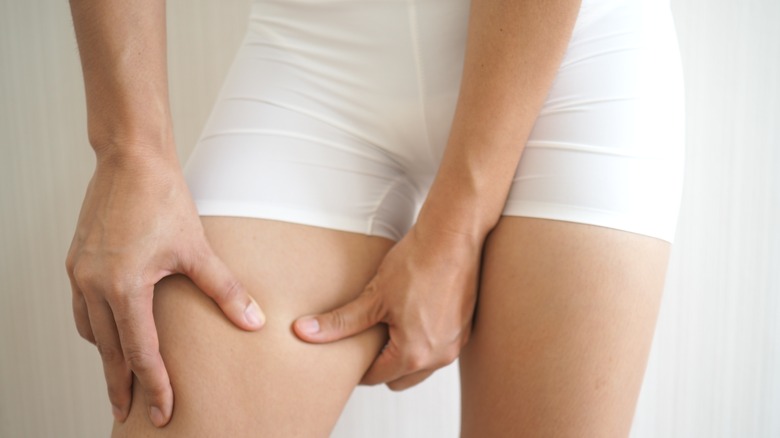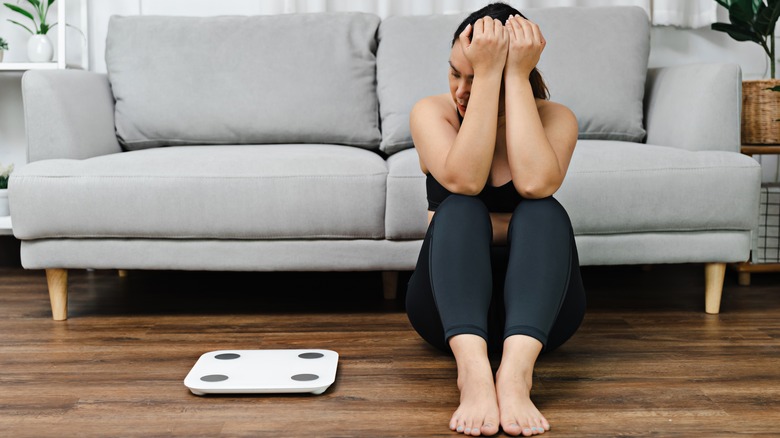Why It's Time To Let Go Of The Thigh Gap Goal
Our standards for a "healthy body" have changed throughout history. Unfortunately, one misconception of health that has stuck around for far too long is the idealization of the "thigh gap." This term is likely painfully familiar if you were a young girl on social media in the 2010s, as, according to Mashable, the thigh gap peaked in popularity between 2012 and 2016. The phrase references the space between a woman's inner thighs when standing with her feet together. This feature became a marker of the ideal female figure for many people. Sadly, more than 10 years later, this is still an expectation many women hold for themselves and others.
Some even predict that there will be a resurgence of the thigh gap standard. Major media sources like GQ and Vogue claim that "indie sleaze," the era of aesthetics where the thigh gap thrived, is making a comeback with Gen Z. Vice explains that in its first iteration, this culture romanticized "heroin chic," promoting thin bodies as well as eating disorder behavior, both of which fueled the thigh gap phenomenon. Hopefully, we have evolved alongside the body positivity movement far enough that with today's "indie sleaze" rebirth, we'll leave this unrealistic goal behind.
Why the thigh gap is not a realistic goal
For most women, striving to achieve a thigh gap is not only dangerous, but it's also impossible. Dr. Rekha Tailor explains to Women's Health, "for the majority of people... genetics mean that their hips are set too close together to exhibit a thigh gap. This, plus the normal fat distribution on the female body, means that women can carry additional fat around their thighs in spite of a healthy diet and exercising."
Sadly, many women instead believe that their inability to achieve a thigh gap is a marker of a poor diet and exercise routine. Elizabeth C. Gardner, MD, FAAOS, tells Insider that typically, no amount of inner thigh workouts will provide a thigh gap. Additionally, physical therapist Abi Hardy says to Insider, "for everyone to have a thigh gap, most would have to starve themselves down to such a low body fat that it would be dangerously unhealthy."
The serious risks of the thigh gap trend
Setting your sights on an unachievable goal is a surefire path to unnecessary dissatisfaction and frustration with yourself. The thigh gap is not exempt from this certainty. Dr. Gardner confirms this to Insider, saying, "unfortunately, there is a strong association between... striving for a thigh gap and disordered eating."
Beyond the fact that the thigh gap is not likely to be achieved, the goal promotes an overall unhealthy mindset that risks the development of eating disorders and other mental illnesses. In conversation with Insider, Janet A. Lydecker, PhD, a psychologist at the Yale School of Medicine, emphasizes that this hyper-fixation on the thighs encourages a disordered behavior known as "body checking." Lydecker remarks that obsessive monitoring of one's appearance is common among eating and anxiety disorders.
If you need help with an eating disorder or know someone who is, help is available. Visit the National Eating Disorders Association website or contact NEDA's Live Helpline at 1-800-931-2237. You can also receive 24/7 Crisis Support via text (send NEDA to 741-741).


